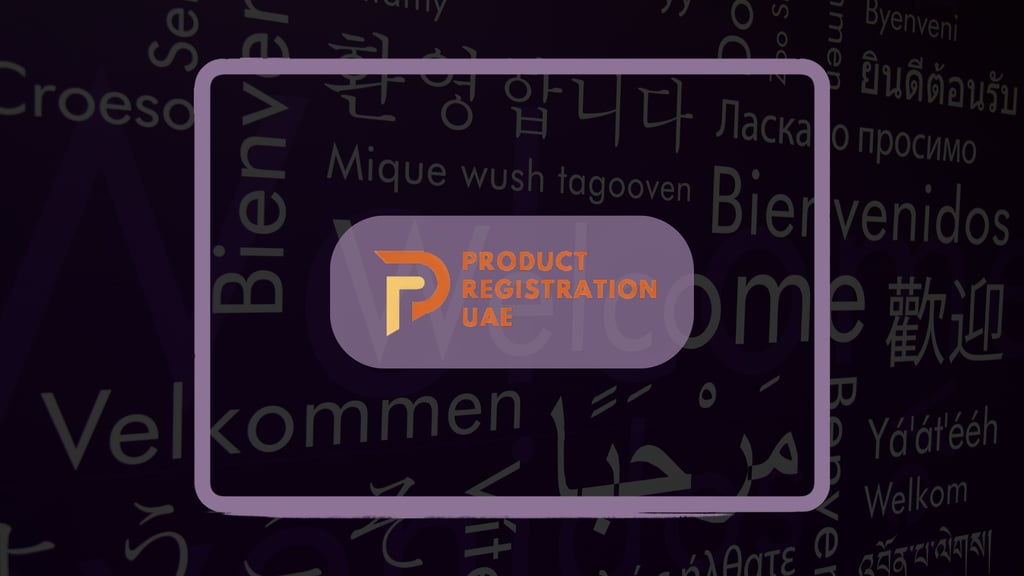Arabic Label Translation Rules
Learn Arabic labeling rules every brand must follow to pass compliance checks & Avoid Rejection by MOHAP, Dubai Municipality, & more | Product Registration UAE


Arabic Label Translation Rules Every Brand Must Know in the UAE
When it comes to product registration in the UAE, one of the most common and costly reasons for rejection is Arabic labeling errors.
Whether you're importing cosmetics, health supplements, food products, or household goods — the label isn’t just a branding asset. It’s a regulatory document, and every word in Arabic matters.
Why Is Arabic Labeling Mandatory in the UAE?
Arabic is the official language in the UAE, and authorities like MOHAP, Dubai Municipality, ESMA, and Abu Dhabi Agriculture and Food Safety Authority (ADAFSA) require Arabic labeling to ensure consumer safety, comprehension, and legal traceability.
No product can legally be sold without compliant Arabic labeling — even if the English side is perfect.
Common Mistakes That Lead to Label Rejection
1. Inaccurate Translations
Brands often use generic or machine translations that misinterpret dosage instructions, ingredient names, or health claims. This leads to regulatory red flags.
2. Using Arabic Stickers
While acceptable for short-term fixes, stickers are not a long-term labeling solution. Authorities often reject products that rely solely on stickers for Arabic content.
3. Font, Placement, and Format Issues
Arabic text must match required font size, location, and formatting conventions. If it’s smaller, unclear, or placed inconsistently with the English version — it will likely be rejected.
4. Mistranslating Claims or Warnings
Misinterpreting phrases like “supports energy” or “use under supervision” can result in misleading claims that violate local advertising or therapeutic guidelines.
5. Missing Mandatory Fields
Batch number, expiry date, country of origin, storage instructions — all must appear in Arabic and match the English version exactly.
Questions Clients Often Ask
"Can I use Google Translate to generate Arabic labels?"
Absolutely not. Regulatory Arabic requires technical accuracy, not just literal translation. Errors here lead to immediate rejection.
"Can I place Arabic on a separate sticker or card inside the box?"
No. Authorities expect Arabic to be part of the outer label, especially for supplements, cosmetics, and foods.
"What if the Arabic text doesn’t fit on the label design?"
Your design must adapt. Legibility and placement are regulatory requirements — not suggestions.
"Does every authority require the same Arabic format?"
No. Requirements differ slightly between MOHAP, Dubai Municipality, ESMA, and others. Expert review is essential.
How to Get Arabic Labeling Right the First Time
✅ Use certified technical translators familiar with regulatory terminology in Arabic.
✅ Have your entire label validated by a local regulatory expert who understands ministry expectations.
✅ Test your label layout early to ensure the Arabic section meets space, size, and formatting requirements.
✅ Avoid copying competitors’ labels — what works for one product may not pass for another.
Label Compliance Isn’t Optional — It’s the First Gate to Market Entry
A rejected label leads to product detention, customs clearance issues, costly relabeling, and loss of distributor trust.
Arabic translation is not a step to rush — it’s a competitive advantage when done right.
Want to ensure your product’s Arabic label passes inspection? Start a chat now using the bottom-right button or contact our compliance team for a full review.
Continue Your Compliance Journey with These Reads:
Understand what authorities look for in What UAE Authorities Check on Supplement Labels
Avoid costly delays with Cut Product Approval Delays in UAE – Fast 2025 Guide
Fix label errors before they become penalties with What Are the Penalties for Non-Compliance in UAE?
If you’re launching in the UAE for the first time, read this guide on why so many first-time brands get rejected — and how to avoid the same mistakes.


